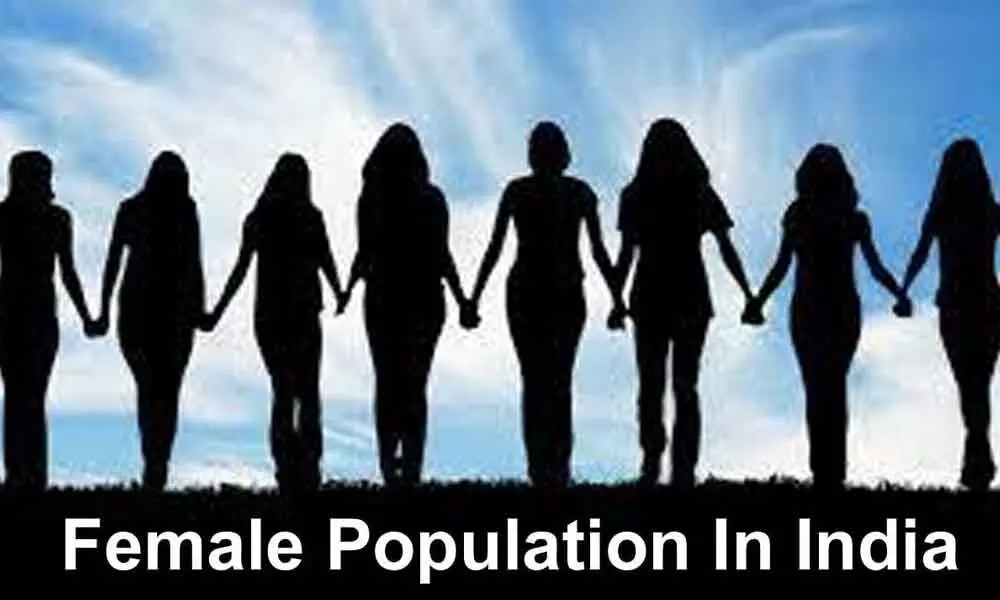Live
- World Heritage Week celebrations conclude
- Coronation of Vishvaraj as Mewar’s 77th successor starts amid questions over palace visit
- Give utmost priority to research: SKLTHU V-C
- IT Min launches ‘Transforming 10,000 Minds’ prog
- TTD Board member interacts with locals in Tirumala
- Uttam prods babus to fast-track irrigation projects across State
- Union minister Pradhan launches 'The Teacher App'
- Oppn members seek more time for JPC on Waqf Bill
- SC upholds ‘secular, socialist’ in Preamble
- RASS conducts Siva Parvathi Kalyanam
Just In
NFHS survey finds more women than men in India


Representational Image
The new sex ratio is 1,020: 1,000. The sex ratio at birth also improved from 919 to 929
New Delhi: Indicating a demographic shift, the number of women surpassed men for the first time in India with the sex ratio being 1,020: 1,000, according to findings of the National Family and Health Survey-5.
"With this, we can say India moves in the league of the developed countries - as the sex ratio crosses 1000," a health ministry official said, attributing it to measures taken for women empowerment such as financial inclusion and for combating gender bias and disparities. The sex ratio at birth also improved from 919 in 2015-16 to 929 in 2019-20, indicating positive impact of measures like implementation of the PC and PNDT Act and various other interventions. According to NFHS-3, conducted in 2005-06, the sex ratio was 1000: 1000 and in 2015-16 (NHFS-4), it declined to 991:1000.
On November 24, the Union health ministry released NFHS-5 (2019-21) results for India and 14 phase-II states and union territories in the form of fact-sheets of key indicators on population, reproductive and child health, family welfare, nutrition and other health related areas.
The findings of NFHS-5 in respect of 22 states and union territories covered in phase-I were released in December, 2020. According to NFHS-5, 88.6 per cent of the births (in the 5 years before the survey) in the country were delivered in a health facility. A significant rise since NFHS-4 (78.9 per cent) is a proof that India is marching towards achieving universal institutional births, officials said.
"Assistance by properly trained health personnel working within an enabling environment is needed to eliminate preventable maternal and newborn deaths. A key strategy to ensure skilled care during childbirth is to that all births take place in health facilities in which obstetric complications can be treated when they arise," the official said. Nearly four-fifth (78 per cent) mothers received postnatal care from health personnel (doctor/nurse/LHV/ ANM/midwife/other health personnel) within two days of delivery in the country, a significant rise from 62.4 percent in NFHS-4.
This would result in reducing the maternal and infant mortality rates in the country. The days and weeks following childbirth - the postnatal period, are a critical phase in the lives of mothers and newborn babies. Most maternal and infant deaths occur in the first month after birth. Thus, it is recommended to receive postnatal care from health personnel within the first 48 hours (2 days) of delivery, the official said. The survey findings stated total fertility rate (children per woman) in the country has reached the replacement level of fertility, a significant demographic milestone. The TFR for India in 2019-21 has reached 2.0 children per woman compared to 2.2 in 2015-16. This means women are giving lesser number of births in their reproductive period compared to earlier.
This also indicates better knowledge and use of family planning services, late entry into marriage/union, etc, the ministry official said. The birth registration (with the civil authority) for children under age 5 years has increased from 79.7 per cent (NFHS-4, 2015-16) to 89.1 per cent.

© 2024 Hyderabad Media House Limited/The Hans India. All rights reserved. Powered by hocalwire.com






